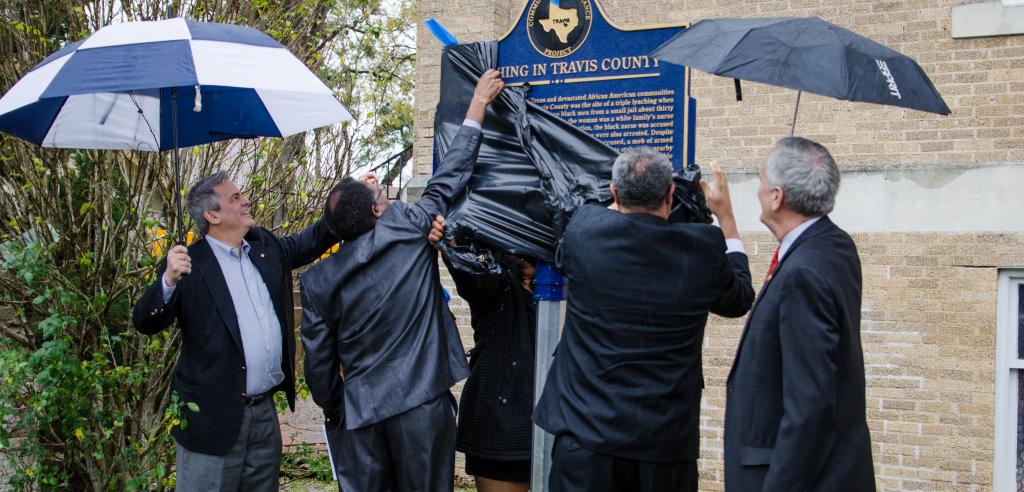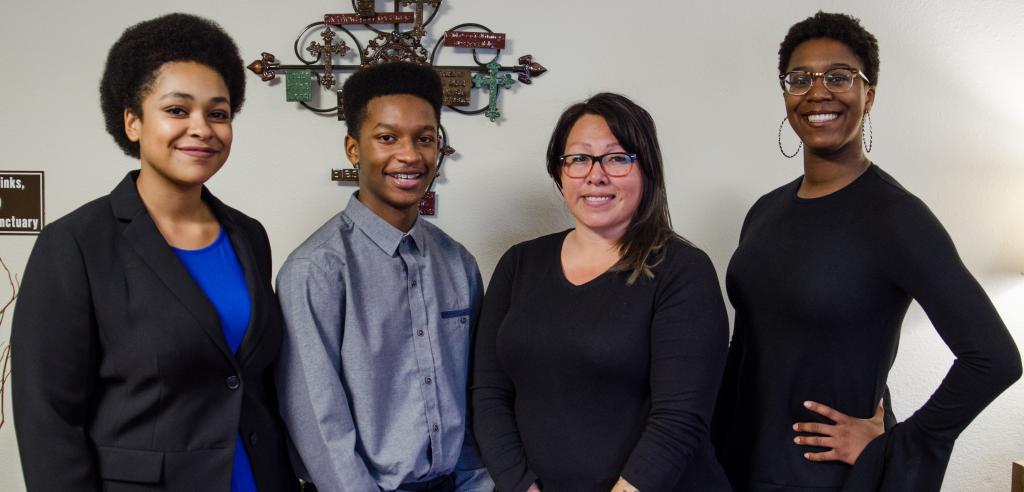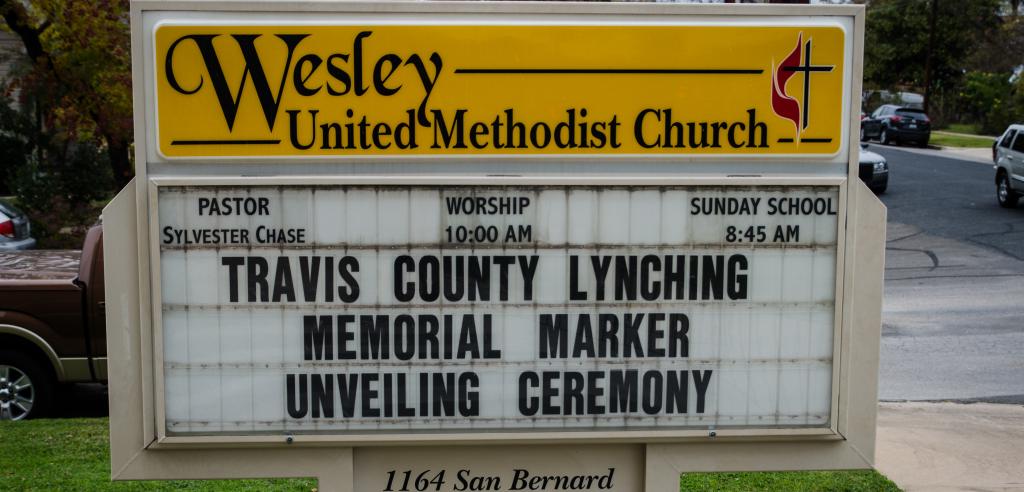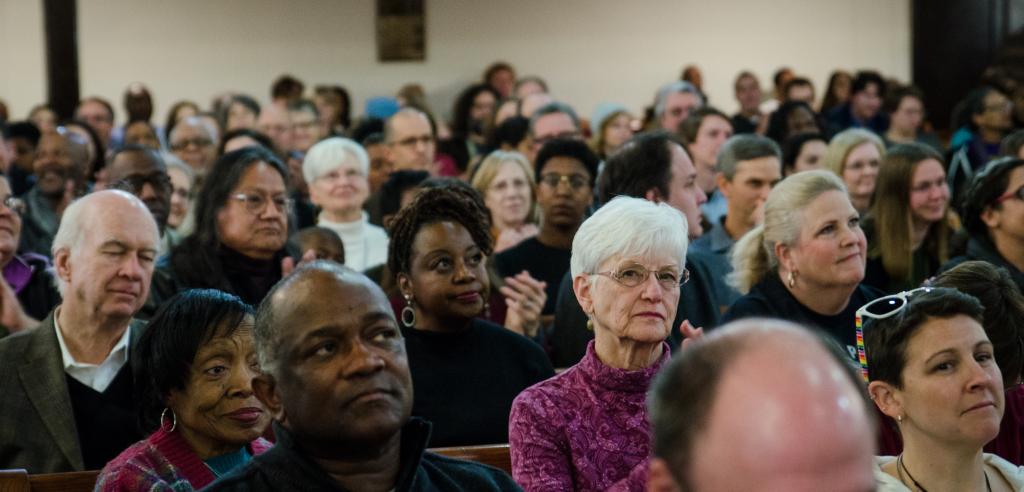On December 16, community members and civic leaders gathered with EJI in Austin, Texas, to erect an historical marker to memorialize victims of racial terror lynching as part of EJI’s Community Remembrance Project.
Austin Mayor Steve Adler, Congressman Lloyd Doggett, and Travis County Commissioner Jeff Travillion opened the ceremony at Wesley United Methodist Church on Saturday afternoon. The program featured a keynote address by history professor Roland Hayes and a historical overview by Austin NAACP President Nelson Linder.
EJI announced the winners of our Racial Justice Essay Contest and awarded them $5000 in scholarships. Westlake High School sophomore Jemima Abalogu won first place and read her essay, We Cannot Forget: The Continuation of Police Brutality Against African American Youth, during Saturday’s ceremony. Angelina Coleman, a sophomore at McCallum High School, won second place; third place went to Trey Washington, a sophomore at Del Valle High School; fourth to Destin Watson, a senior at McCallum High; and fifth to Sydney James, a senior at Fusion Academy.
Lynchings in Travis County, Texas
On August 14, 1894, Travis County was the site of a triple lynching when a white mob seized a Black woman and two Black men from a small jail about 30 miles outside of Austin. According to news reports, the woman was working as a nurse for a white family when their child died, and without evidence or investigation, she was accused of murder in the child’s death. Two Black men were also arrested.
Many African Americans were lynched across the South under accusation of murder. During this era of racial terror, mere suggestions of Black-on-white violence could provoke mob violence. The deep racial hostility permeating Southern society often focused suspicion on Black communities after a crime was discovered, whether or not there was evidence to support that suspicion, and accusations against Black people were rarely subjected to serious scrutiny.
Despite having no evidence to support any claim against the accused, a mob of armed white men abducted the three Black people from the jail, tied them to stakes in a nearby field, and fired multiple rounds at them, killing all three. No one was held accountable for this violence.
It was not uncommon for lynch mobs to seize their victims from jails, prisons, or courtrooms. Though they were armed and charged with protecting the people in their custody, police almost never used force to resist white lynch mobs intent on killing Black people.
Press coverage published as far away as Britain failed to name the three lynching victims, identify the town where they were jailed, or provide details about the location where they were lynched, but did report that the woman and two men were very likely innocent of any crime.
EJI’s Community Remembrance Project
“In this soil, there is the sweat of the enslaved. In the soil there is the blood of victims of racial violence and lynching. There are tears in the soil from all those who labored under the indignation and humiliation of segregation. But in the soil there is also the opportunity for new life, a chance to grow something hopeful and healing for the future.”
– EJI Director Bryan Stevenson
EJI collects soil from lynching sites as part of its Community Remembrance Project, a campaign to recognize the victims of lynching that includes erecting markers at lynching sites and creating a national memorial that acknowledges the horrors of racial terror in America. EJI believes that by reckoning with the truth of the racial violence that has shaped our communities, community members can begin a necessary conversation that advances healing and reconciliation.
Lynching in America
Thousands of Black people were the victims of lynching and racial violence in the United States between 1877 and 1950. The lynching of African Americans during this era was a form of racial terrorism intended to intimidate Black people and enforce racial hierarchy and segregation.
Lynching was most prevalent in the South. After the Civil War, violent resistance to equal rights for African Americans and an ideology of white supremacy led to violent abuse of racial minorities and decades of political, social, and economic exploitation.
Lynching became the most public and notorious form of terror and subordination. White mobs were usually permitted to engage in racial terror and brutal violence with impunity. Many Black people were pulled out of jails or given over to mobs by law enforcement officials who were legally required to protect them. Terror lynchings often included burning and mutilation, sometimes in front of crowds numbering in the thousands.
In response to this racial terror and violence, millions of Black people fled the South and could never return, which deepened the anguish and pain of lynching. Many of the names of lynching victims were not recorded and will never be known, but EJI has documented 338 African American victims of racial terror lynching killed in Texas during this era.



